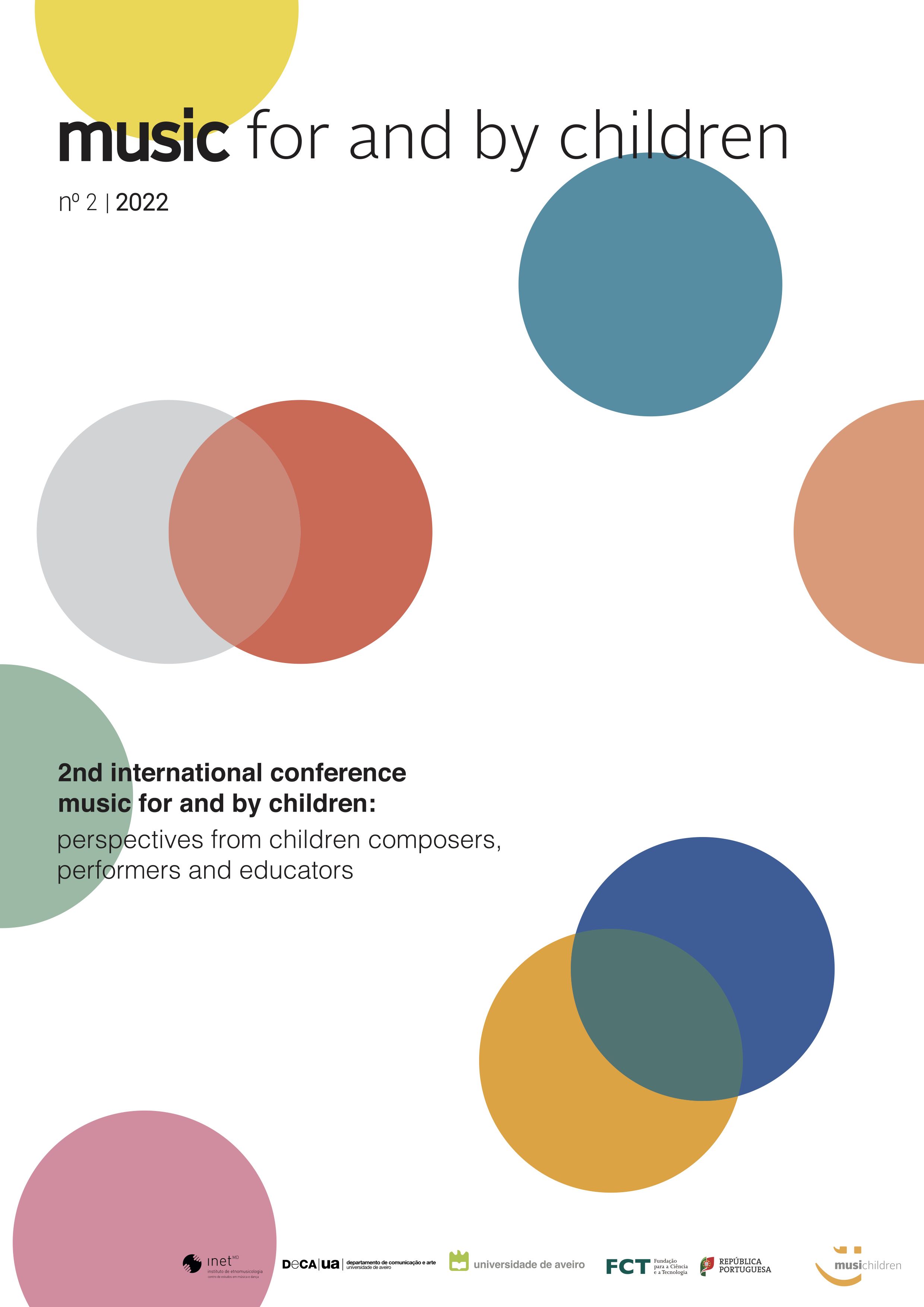“The things of the land are weird and different”, said The Girl from the Sea. Bringing childhood closer to “contemporary music” through a musical signification strategy.
Abstract
The present communication analyses A menina do mar (2019), theatre music composed by Edward Luiz Ayres d'Abreu (1989-) after the homonym children's tale (1958) by Sophia de Mello Breyner Andresen. The tale explores, through the encounter between a boy from the land and a girl from the sea, the fascination and attraction that the unknown exerts on humanity. The score, written for a quintet of actors and nine musicians, was presented in several auditoriums, in a total of more than forty performances.
The relationship between text and music will be analysed with regard to its dramatic qualities, while revealing the undertaken strategy of musical signification and reflecting on how the musical resources may or may not offer, in this context, an opportunity to approach the childhood to the sound universe of “contemporary music” and its characteristic "dissonances", "noises", and “extended techniques”, so rarely experienced by large audiences.
Focusing on the aforementioned score, the analysis will also take into account, as comparative elements, other musical versions composed after the same story: that of Fernando Lopes-Graça (1961) and that of Sassetti and Raposo (2019). This study takes advantage of the researches made by Gomes (2000) and Santana & Santana (2021), respectively on the original story and on the three known musical adaptations. The analytical approach is here served by the study of musical significance as categorized by Grimalt (2020) and, in particular, by the topic theory as developed by Monelle (2000), inscribing the strategies used in a long genealogy of similar examples that can be heard throughout the history of Western classical music.
The analysis resulted in the categorization of different solutions of musical meaning that address, among many others, the ideas of “sea”, “storm”, “travel”, “fire”, or dichotomies such as joy-sadness, light-shadow, movement-statism. Some of the resources, which include clusters, glissandi, multiphonics, various noises, technically inherited by the 20th century avant-gardes and widely used by several contemporary languages, appear as programmatic solutions, hence contributing to reinforce historically consolidated associations.
“The things of the land are weird and different”, said The Girl from the Sea. Taking into account the daily musical practices, this ironic inversion is reinforced because the music associated with the sea, in the analyzed score, ends up sounding more “weird” and “different” than the music associated with the land. “Contemporary music” is almost exclusively reserved for the aquatic world; at the same time, there is an invitation for the listener to dive into this “weird” and “different” world. But a final question emerges: if, in this ludic gesture, in this pedagogical effort, “contemporary music” sounds so deeply programmatic, are not we contributing, as creators, to the stigma and prejudice of listening… of what Boulez would perhaps still prefer to call “absolute music”? Or, from another point of view, and based on Ferreira de Castro's (2013) reflection, are we not simply highlighting the “fallacy of objectivity” that certain “contemporary music” inherited from Hanslick's romantic discourse (Bonds 2014)?
References
Ayres d’Abreu, E. L. (2020). A menina do mar [full score]. Unpublished.
Bonds, M. E. (2014). Absolute Music: The History of an Idea. Oxford: Oxford Scholarship Online.
Ferreira de Castro, P. (2013). “Who Owns Musical Meaning? — Aspects of the Objectivist Fallacy in the Writings of Hanslick, Stravinsky and Boulez”. In T. Malecka & M. Pawłowska (Eds), Music: Function and Value — Proceedings of the 11th International Congress on Musical Signification (vol. I, pp. 501-512). Akademia Muzyczna w Krakowie.
Gomes, J. A. (2000). Sophia, infância e apelo do mar: elementos para uma leitura da obra para crianças. Matosinhos: Contemporânea.
Grimalt, J. (2020). Mapping Musical Signification. Cham: Springer.
Monelle, R. (2000). The Sense of Music: Semiotic Essays. Princeton & Oxford: Princeton University Press.
Santana, H., & Santana, M. R. (2021). “A menina do mar: até onde o som (re)diz e (re)interpreta o olhar de Sophia de Mello Breyner” [paper presentation at the 10th Meeting on Research in Music, Portuguese Society for Research in Music]. Unpublished.
Copyright (c) 2023 Music for and by children

This work is licensed under a Creative Commons Attribution 4.0 International License.





